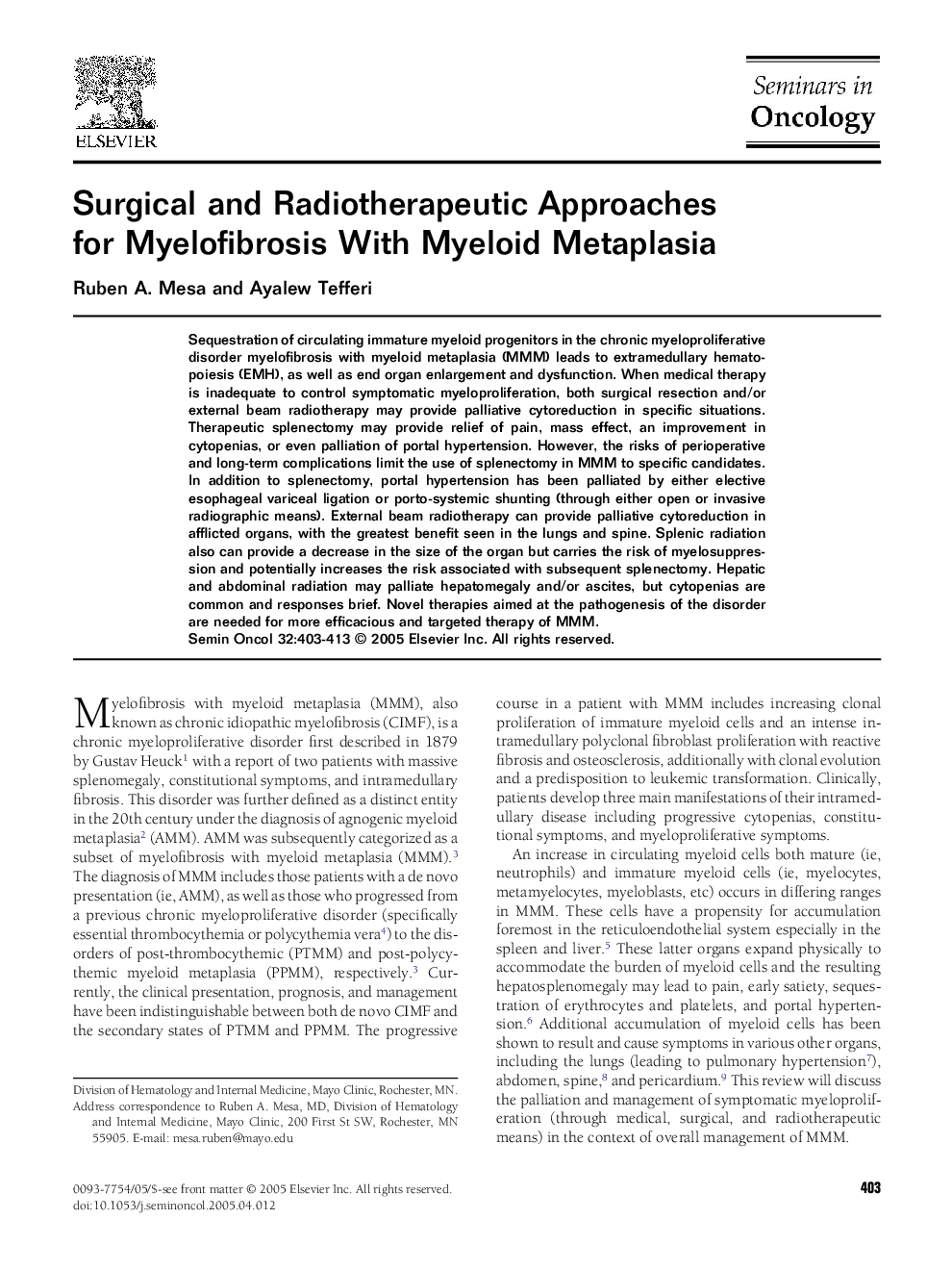| Article ID | Journal | Published Year | Pages | File Type |
|---|---|---|---|---|
| 10924543 | Seminars in Oncology | 2005 | 11 Pages |
Abstract
Sequestration of circulating immature myeloid progenitors in the chronic myeloproliferative disorder myelofibrosis with myeloid metaplasia (MMM) leads to extramedullary hematopoiesis (EMH), as well as end organ enlargement and dysfunction. When medical therapy is inadequate to control symptomatic myeloproliferation, both surgical resection and/or external beam radiotherapy may provide palliative cytoreduction in specific situations. Therapeutic splenectomy may provide relief of pain, mass effect, an improvement in cytopenias, or even palliation of portal hypertension. However, the risks of perioperative and long-term complications limit the use of splenectomy in MMM to specific candidates. In addition to splenectomy, portal hypertension has been palliated by either elective esophageal variceal ligation or porto-systemic shunting (through either open or invasive radiographic means). External beam radiotherapy can provide palliative cytoreduction in afflicted organs, with the greatest benefit seen in the lungs and spine. Splenic radiation also can provide a decrease in the size of the organ but carries the risk of myelosuppression and potentially increases the risk associated with subsequent splenectomy. Hepatic and abdominal radiation may palliate hepatomegaly and/or ascites, but cytopenias are common and responses brief. Novel therapies aimed at the pathogenesis of the disorder are needed for more efficacious and targeted therapy of MMM.
Related Topics
Life Sciences
Biochemistry, Genetics and Molecular Biology
Cancer Research
Authors
Ruben A. Mesa, Ayalew Tefferi,
